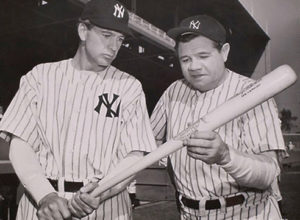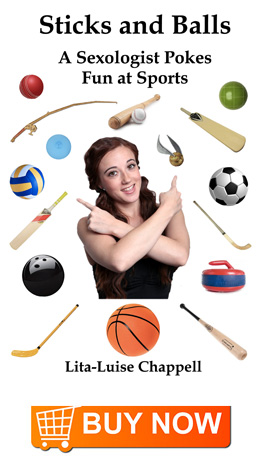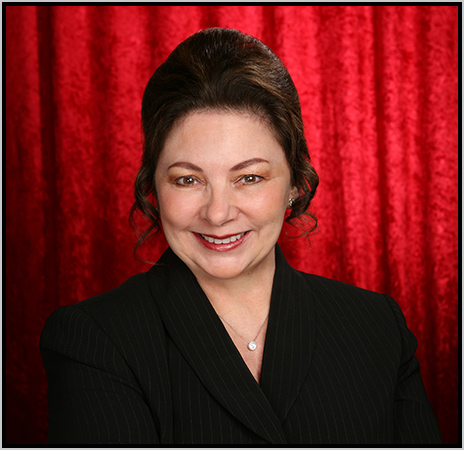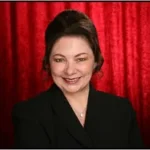
Sticks and Balls: A Sexologist Pokes Fun at Sports
An informative and entertaining reference guide that explores the relationship between sports and sex, most especially in thirty-five stick and ball sports. Within is an introduction to each sport, a detailed description of the sticks and balls used, and a very specialized list of real terms that abound with sexual innuendo and slang. Sports and sexuality prove to be curious and fascinating bedfellows.
Now Available in Paperback
Published 2019 by Templar Media | 549 pages | ISBN: 0996627251 | ISBN-13: 978-0996627252
Reviews:
 “A Home Run!”
“A Home Run!”
Review by Lilah Shahkhor
Sticks and Balls: A Sexologist Pokes Fun at Sports is a rare delight for sports enthusiasts and linguistics lovers alike. Encyclopedic in scope and style, this book is about the duality of words in sports that also have a sexual meaning. Those who are curious about oddities and quirks of the English language will find this study fascinating, whether or not they have any interest in sports. As the author points out in her introduction, the list of terms for just about every sport abounds with sexual innuendo and slang, but especially those games that are played with either a stick or a ball, or both. This is so ingrained in the lingo of sports, and in turn, sports terminology has made it full circle back into our everyday common speech.
Sticks and Balls starts off with a broad look at the development and history of sports, and answers such questions as ‘Why Do Sports Get Us Off?’. Such potentially raunchy topics are handled seriously, but not without humor, as in the section on the ‘Hormones that Sports and Sexuality Share’. Lita-Luise Chappell is a sexologist, now retired, with bachelor and master degrees in psychology and health education, certifications in hypnotherapy, neurolinguistics, erotology, sex education, clinical sexology, and a doctorate in human sexuality. Her background and expertise lend a jocular aplomb to teaching us what amines, peptides, and steroids have to do with making us athletic, as well as horny. Her handling of the prurient content brings a fun approach to what some might consider to be embarrassing subjects; the discussion is straight forward and scholarly, all with the occasional wink and a nod, and all puns intended.
Next, the book delves into the individual sports and their sex-related terms, broken down by sports that use sticks (Archery, Curling, Darts, Fishing, Ice Hockey, Pole Vault, Shuffleboard, Quarterstaff), sports played with balls (Basketball, Bocce, Bowling, Dodgeball, Football, Handball, Kickball, Rugby, Soccer, Volleyball), sports with both sticks & balls (Bandy, Baseball, Billiards, Cricket, Croquet, Golf, Hurling/Camogie, Lacrosse, Polo, Quidditch, Rounders, Shinty), followed by racket & paddle games (Badminton, Table Tennis (aka Ping Pong), Racquetball, Squash, Tennis). Once you make it through this section, you’ll never think of phrases such as ‘home run’, ‘bases loaded’, ‘double header’, ‘switch hitter’, ‘hat trick’ or ‘grand slam’ again without blushing! While not intentionally titillating, make no mistake about it, Sticks and Balls is filled with graphic definitions of words and phrases you’d never use in front of your mother.
The book finishes up with extensive indices of slang words relating to sexual anatomy and activities, along with a bibliography and source lists. This is a bevy of information on the evolution of dirty words, colloquialisms, and semantics.
I am one of those people described at the beginning of this review who have no interest in sports, but this did not detract from my appreciation of what the author has done with this in-depth look at its vernacular. Even more interesting to me than the actual words that connect sex and sports is the overarching idea that we humans have an unconscious need to insert sexuality into everything we do… including ping pong.
 “A Word Nerd’s (wet?) dream come true.”
“A Word Nerd’s (wet?) dream come true.”
Review by John George
This is a very “thick” book, and that’s a good thing. It discusses the overlap between sports & sexuality, from the standpoint of the double entendre of sports terminology. It is very exhaustive, both for the sports covered, and of course the terminology peculiar to each sport.
It also includes an exhaustive list of sexual slang & euphemisms, as an appendix. Lots of fun if you’re into sports, sex, or the fun you can have with the English language. (The book is also very nearly technically perfect for spelling, research &c.) All in all, very highly recommended.
 “Excellent book!”
“Excellent book!”
Review by K.L.
I very much enjoyed reading this book. It is written in an engaging, informative style that is neither too titillating nor too clinical in its content. The author has used her extensive clinical expertise to write a book that can appeal to anyone who is interested in finding the links between sexuality and sports.
An Interview about Sticks and Balls:

- Q: Doctor Chappell, would you please describe what your book, called Sticks and Balls: A Sexologist Pokes Fun at Sports, gets into?
A: It is a book that was written to show the connection between sports and human sexuality. The work first looks into the history of many early sports created that use a stick and ball. It talks about why people are drawn to sports, and then goes into the physiological reasons. It does this by describing the many hormones that get stimulated within the body, regardless of whether the person is an athlete involved in sports or watching sports, and whether a person is involved in a sexually stimulating situation or watching a sexuality. The main body of the book is a guide to thirty-five different sports that use a stick and/or a ball, and some of each sport’s terms that describe what they mean in that sport, and which also have a sexual meaning. The chapters are divided up into sports that use a ball, sports that use a stick, those that use both a stick and a ball, and those that use a racket or paddle. Perhaps one of the most interesting aspects about the book, is how sexual terms and slang have been sublimated within sports. And conversely, about how many sport’s terms have entered into the common sexual vernacular of our English-speaking cultures.
- Q: How did you get involved in looking at sport’s terms in this way? You are a doctor of human sexuality. Did it occur within your practice?
A: Yes, it began that way. In the early years of my career as a sex counselor and therapist, I was completely unaware of such shared aspects of sexuality and sports. That is, until one day when a client came to me with a certain problem. He was a baseball player who was having a difficult time with his erections, and for some reason it seemed to be affecting his game. If he did well in the game that day, he got a good erection that night, but if he did poorly, his erection suffered. I knew really very little about baseball, as I never was much of a sports enthusiast. My world was focused on science, not sports. But it gave me the opportunity to learn about what motivates an athlete and how to help them focus to improve their skills. What is more, it allowed me to see the very interesting relationship that sports and sexuality share.
A lot of people want to succeed but don’t, because they either lack the knowhow, falter on determination with achieving a goal or experience because of an underlying feeling of unworthiness. I am not only speaking about sports, but in pretty much every avenue for success. Nonetheless, this one ball player got me into researching baseball, which helped me understand a connection between sports and sexuality. We both came to discover that his problem began when he overheard a guy on his team tease him about not being able to “get it up enough to make a good swing,” when it was a good pitch. Sometimes a misplaced comment can deeply affect us. When he realized that was where his fear had come from, things began to change. With some counseling of positive reinforcement, he began to believe in himself again. He was a good player, but all players now and then, will make a poor judgement as to how they respond during a game. Instead of him focusing on the fear of not achieving a good erection, he was better served by replacing that fear with focusing on his love of the game and how excited he could get about it. Once he did that, both his game and his sex life turned around.
- Q: Was that when you made a connection between sport terms and sexual terms?
A: That first experience introduced the connection of sex and sports, but not the words that sex and sports share. That happened with another client. A woman came to me who was frustrated with her husband because all he wanted to do on the weekend was watch sports, when she was hoping for something more intimate. He was especially into football and the season was fast approaching. She was not sure how she was going to cope. After that initial meeting, I looked into football like I had with baseball, and although I had not spotted it the first time I looked at a sport, I noticed a list of terms for football that also had a sexual meaning. When this woman came to see me the following week, I suggested that she study the game’s terminology. I handed her a sheet of football terms that also had a sexual interpretation. I suggested that she study the terms, and when watching the game with her husband, whenever any of those terms were used by the sportscaster, that she touch her husband to get his attention, and with a sexual gleam in her eye repeat that term. Then to wait and see what might happen. She was quite surprised about his response. It did not take his attention away from the program during the game, but it definitely made for fun with halftime and after game entertainment!
- Q: So it sounds as though the terms you list should be very interesting to look at. You also link sports and sex with sharing the same hormones. Can you explain how that is possible?
A: Simply put, in the human body there are quite a few hormones that react to stress, exertion, and excitement. It is precisely these physiological reactions that stimulate the body during sexual activity, and in sports for when an athlete plays sports, and even to the person watching sex or that sport.
- Q: So, what do these hormones actually do in the body?
A: Hormones have a wide range of responsibilities. They help to send messages, control functions, and coordinate activities, whether we are awake and active or asleep and at rest. The production and regulation of hormones is the work of the endocrine system. Hormones control the metabolism that regulate the body’s energy, attend to reproductive processes, grow tissue, regulate water levels, create protein for building muscles, help burn fat, and affect a person’s mood.
- Q: Can you give us an idea of which hormones are doing all this?
A: Yes, I can. In the book I talk about three classes of hormones: amines, which are modified amino acids that contain nitrogen and influence our sympathetic nervous system; peptides, which are amino acids that work with the cell membrane; and steroids, which interact with receptors in the nucleus of a cell. Each of these types of hormones affect a person at all times, and with their stimulus those hormones go to work, whether it is for that hard-won homerun or that long-awaited for, sexual interaction.
- Q: Many of our readers have probably heard about steroids, as competitive sports teams have been banned from using them. What is it about steroids that can make an athlete better and what is bad about them?
A: Dopamine, epinephrine, and norepinephrine are amine hormones. They work with the sympathetic nervous system to regulate body function during cardio-respiratory use, and to produce energy. Amines are neurotransmitters, which cause a person to become more alert, focused, and they increase one’s motivation to act. There is also the human growth hormone (HGH), which is a steroid, and it is effective in enhancing physical performance. It is a naturally produced steroid in the body, but when additional amounts are taken, it will augment muscular development and strength. HGH is a naturally occurring peptide, secreted by the pituitary gland, but its production lessens with age. It can be highly effective for short-term use, but continued use of this steroid can cause a number of problems: swelling of hands and feet, fluid retention, excessive sweating, blood clotting, menstrual irregularities, tendon damage, hypertension, atherosclerosis, carcinoma, hepatic neoplasms, jaundice, psychiatric and behavioral disorders, and irreversible organ damage.
- Q: Oh, that sounds like a good reason not to use them. And what about the sports terms that have a sexual meaning? Can you share some of them with us, so we know what kind of words will be found in the book?
A: Okay, here are a few examples. In archery, there is the term “kisser,” which is a plastic button or a tied-on knot of thread designed to be felt by the archer’s lips at full draw. It helps to keep the head straight, and is used to indicate vertical distance. In sexual terms, a “kisser” is one who kisses. In curling there is the term “rocks,” which is the rounded granite stone, thrown by the curlers during the game. In sex-speak, “rocks” is a slang term that refers to the testicles, especially when engorged; and, it means to reach orgasm, described albeit physiologically incorrect, as “getting one’s rocks off”. Here’s a term that demonstrates how an aspect of sport’s became a part of the culture, in a past time. FL was an abbreviation for Federal League, which was a major baseball league from 1914 to 1915. But it also stood for “French Letter,” an old term used by soldiers in the two World Wars, for a condom. I’ll share one more, “block” and “blocking”. In football, this is when a player obstructs another player with their body, pushing the opponent back or preventing movement beyond the blocker. In sexual slang, this is short for a “cock-block,” or one who blocks the way for another to connect sexually with a prospective partner for sexual activity.
- Q: You also have listed in your table of contents a chapter called “A sexologist Looks Ahead”. What is that all about?
A: That is a fun section that I decided to add, which lists a bunch of sport’s terms, from those same thirty-five sports that I could not find in English-speaking slang lists. These sport’s terms seemed most likely to eventually succeed as being accepted into our sexual urban nomenclature. They just seemed so obvious, I had to add them. Also, in this section, I had a lot of fun analyzing each of the sports that have additional sexual aspects, which did not come up as terms. These address particular rules, qualities, or attributes of the game, which had additional sexual emphasis, and are written as a doctor might make notes when speaking with a client in session, which may be discussed or later analyzed by the clinician.
- Q: Perhaps just as interesting as the body of the work, you list even more sexual terms in the back of the book. Can you tell us about those? And, which of those sports you write about has the most sexual terms?
A: The list of additional slang words are similes, euphemisms, homographs, and homonyms, of sexual names for both male and female genitalia and sexual interactions. There are literally thousands of words listed that have been used in urban or street usage, from English-speaking countries. And to answer your last question, Hurling was the winner, with 72% – that is, out of its 25 sports terms 18 also have a sexual meaning. On the average, of the thirty-five sports I explored, about one-quarter of their terms average out to also be sexual terms.
Thank you so much for explaining your book, Sticks & Balls. It seems destined to be an obvious read for anyone interested in sex and sports.

 The official website of Lita-Luise Chappell, writer on sex, magic, food, distant lands, and everyday life with articles, poetry, novels, travelogues, rituals, cookbooks, and short-stories.
The official website of Lita-Luise Chappell, writer on sex, magic, food, distant lands, and everyday life with articles, poetry, novels, travelogues, rituals, cookbooks, and short-stories.
